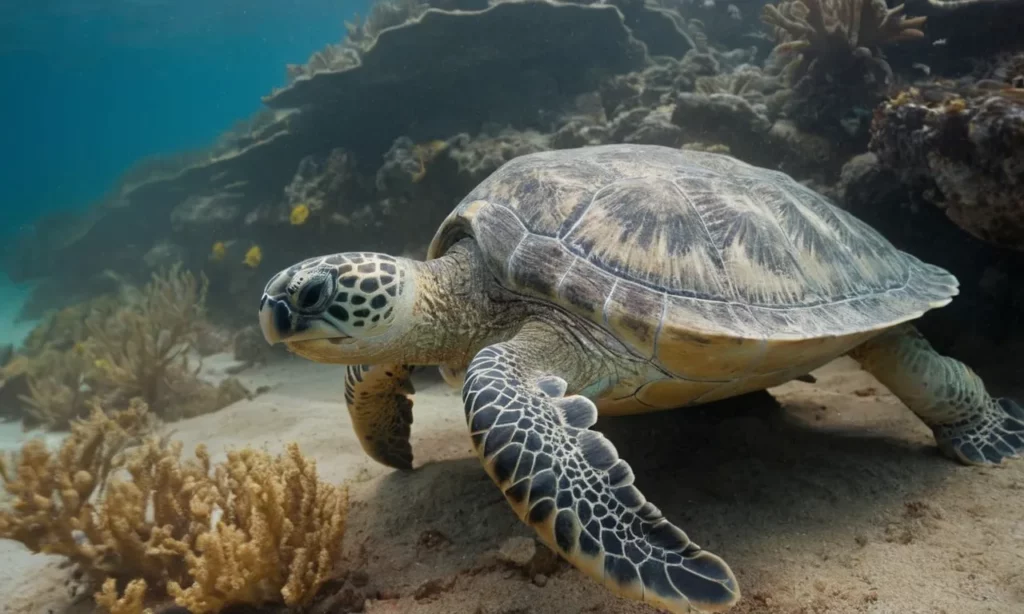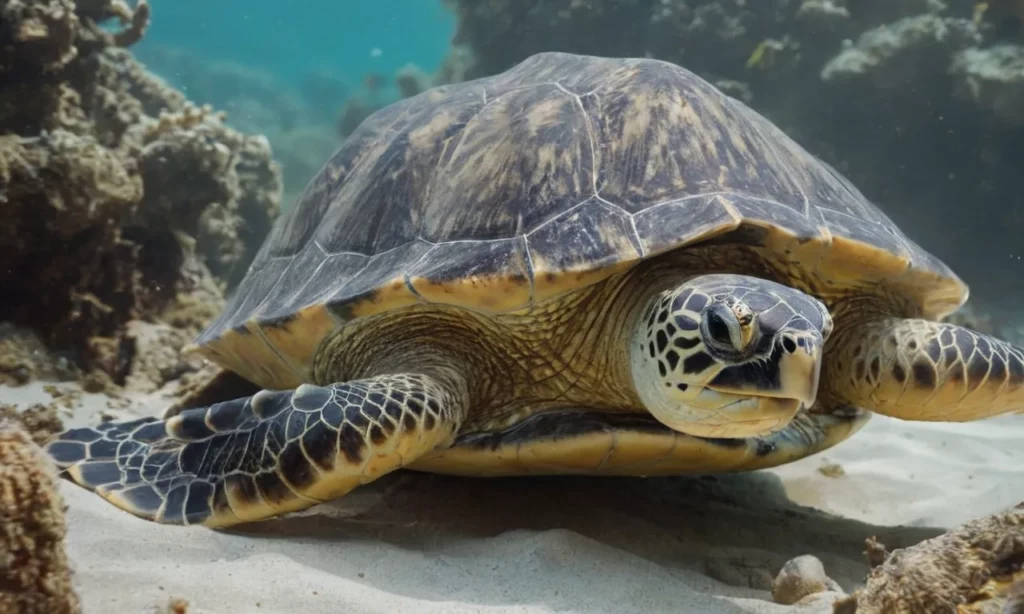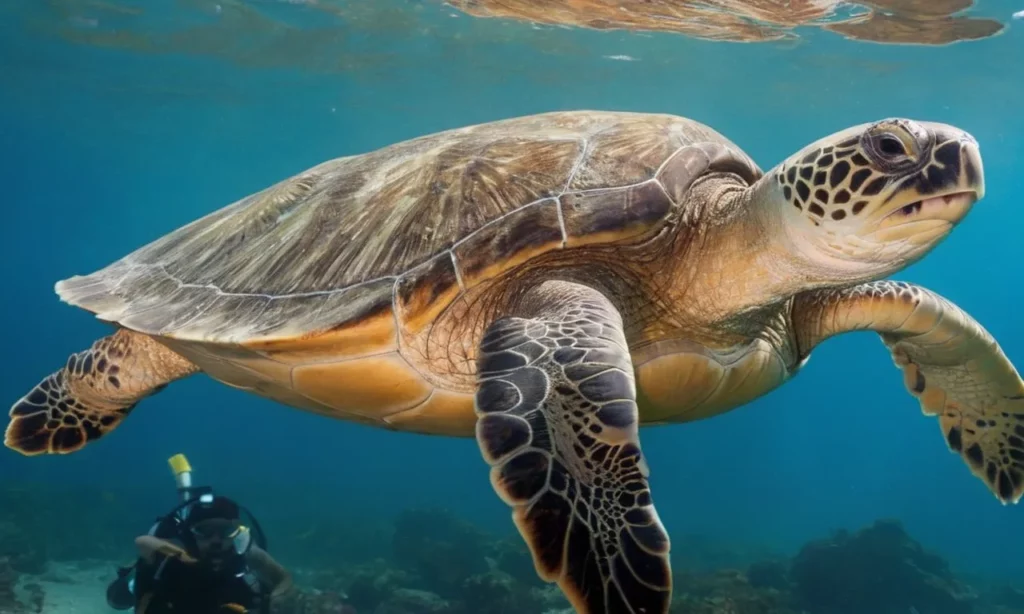Detailed Insights into the Endangered Hawksbill Turtle

The hawksbill turtle is one of the most beautiful and intriguing marine turtles in the world. With their colorful shells and sharp, hawk-like beaks, these ancient reptiles have captivated people for centuries. Unfortunately, hawksbills are also one of the most endangered turtle species on the planet.
To help raise awareness about these amazing creatures, here are 14 fascinating facts about hawksbill turtles:
1. They Get Their Name from Their Beak Shape

Hawksbills get their common name from their narrow, pointed beak that resembles a hawk’s beak. Their scientific name, Eretmochelys imbricata, also references their beak (eretmochelys means “oar turtle” in Greek). This beak allows hawksbills to reach into tight spaces and cracks on coral reefs to look for food.
2. Their Shells Are Beautifully Patterned
Hawksbills are famous for their shells, which feature overlapping scutes (scales) in gorgeous shades of amber, brown, red, and black. No two hawksbill shells are exactly alike – each one has a unique color pattern. These stained glass-like shells are known as “tortoiseshell” and have been used to make jewelry, hair accessories, and other decorative items for centuries.
3. They Are Closely Associated with Coral Reefs
More than any other sea turtle species, hawksbills rely on healthy coral reefs for food and shelter. They use the nooks and crannies of the reef as hiding spots to rest during the day. Hawksbills also play an important role in maintaining reef health by preying on sponges that can smother the reef and outcompete corals.
4. Sponges Are Their Main Food Source

While omnivorous, sponges make up around 70-95% of the hawksbill diet. Their specialized jaws and beaks allow them to rip apart and eat sponges that contain toxic compounds and hard, sharp spicules. Hawksbills helped develop a tolerance to the toxins released when the sponges are eaten.
5. They Nest on Remote Beaches
Female hawksbills return to nest on the same remote, isolated beaches where they were born years before. Unlike other marine turtles that aggregate in large numbers on nesting beaches, hawksbills are solitary nesters, spreading their nests widely across small coastal beaches in the tropics.
6. Females Lay Numerous Clutches in a Season
During nesting season, female hawksbills will lay around 3 to 5 nests at two-week intervals. Each nest contains approximately 140 eggs. In total, one female may deposit 500 eggs or more in a single season before returning to the ocean. The eggs incubate for around two months before hatching.
7. Hatchlings Are Vulnerable to Predators

The tiny hatchlings are just 1-2 inches long and weigh less than an ounce when they emerge from the nest at night. Crawling towards the brightest horizon, the hatchlings scramble to the ocean while avoiding ghost crabs, birds, and other predators looking for an easy meal. Any distraction or obstacle can be fatal for these delicate babies.
8. They Are Long-Distance Migrants
Hawksbills are highly migratory, traveling hundreds or even thousands of miles between their nesting beaches and feeding grounds. Satellite tracking has recorded hawksbills migrating from Nicaragua to the Bahamas, and from East Africa to the Seychelles islands. Their navigational abilities across huge ocean distances are impressive!
9. They Are Slow To Reach Maturity
It takes hawksbills decades to reach sexual maturity. Estimates vary by region, but females generally nest for the first time between 20-40 years old. Hawksbills are believed to live for 50-70 years or more. Their slow growth and late breeding age hinder population recovery from threats like hunting and egg harvesting.
10. Hawksbill Numbers Have Plummeted

Largely due to hunting for shell and eggs, hawksbill populations have declined by over 80% in the last 100 years. They are classified as Critically Endangered globally and face a high risk of extinction. Some researchers believe the eastern Pacific hawksbill is the most endangered sea turtle population in the world.
11. The Shell Trade Devastated Populations
For centuries, hawksbill shell was a lucrative trade item across the Indo-Pacific and continues illegally today. Japan alone imported almost 2 million hawksbill turtles between 1950-1992 for tortoiseshell. Although banned, black market demand for shells and stuffed turtles still threatens the species in many countries.
12. They Get Caught in Fishing Gear
Hawksbills frequently drown after becoming entangled in gillnets or accidently swallowing hooks from longline fishing gear. Their deaths as fisheries bycatch is a major problem, especially for critically endangered populations that cannot afford any losses.
13. Climate Change Threatens Nesting Habitat

Rising sea levels, stronger storms, and beach erosion linked to climate change destroy hawksbill nesting areas and can wipe out entire nests. Warmer sand temperatures also cause hatchlings to be predominantly female, skewing sex ratios. Loss of coral reef food resources due to warming and acidifying oceans is another concern.
14. Conservation Efforts Are Underway
While hawksbills face severe threats, conservation groups are working to reverse the population declines. Protecting nesting beaches, enacting fishing regulations, using circle hooks, developing alternative incomes for egg collectors, and raising public awareness can all support hawksbill recovery. There is hope for the future if decisive action is taken.
Key Takeaways: Facts About Hawksbill Turtles
The hawksbill turtle is an important part of tropical coral reef ecosystems, with a unique appearance and life history. Learning more about these endangered reptiles can hopefully inspire much-needed conservation efforts to protect hawksbills and help stabilize their declining populations. With greater awareness and decisive action, there is still time to save these ancient mariners from extinction.
Humanity owes it to future generations to preserve the hawksbill’s role in our world’s oceans and reefs. Each species saved safeguards that delicate ecological balance enabling life to thrive on our planet.
Humanity owes it to future generations to preserve the hawksbill’s role in our world’s oceans and reefs. Each species saved safeguards that delicate ecological balance enabling life to thrive on our planet.






